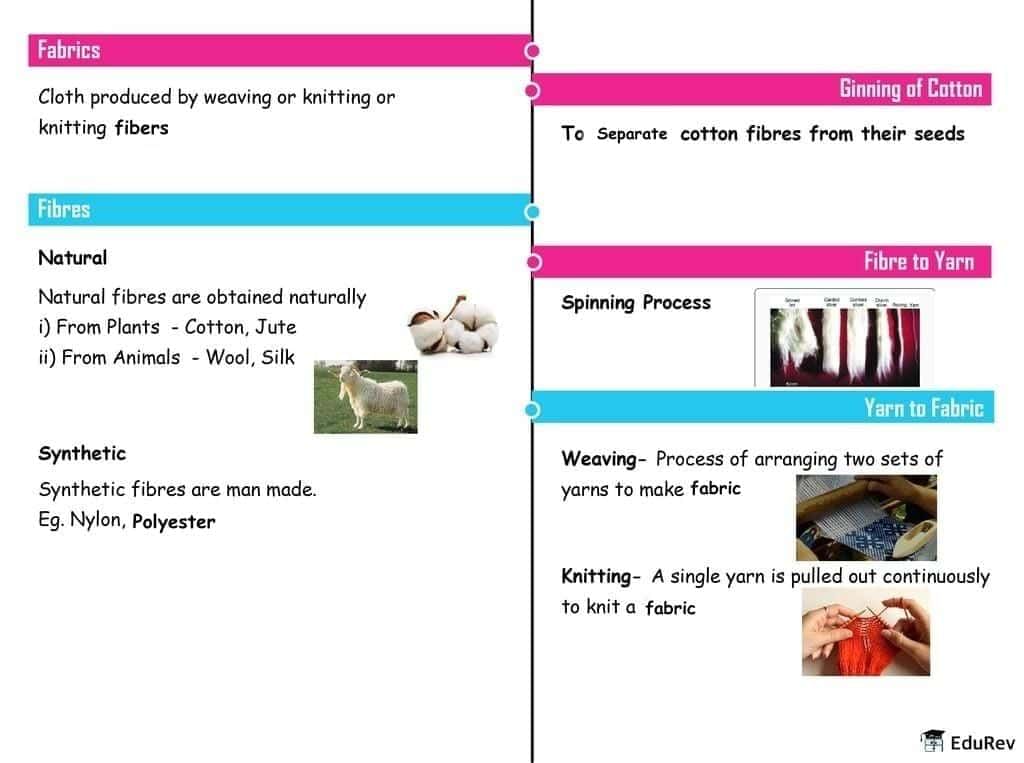Class 7 Exam > Class 7 Notes > Class 7 Oxford Science: Chapter Notes, Worksheets & Tests > Mind Map: Fibre to Fabric
Mind Map: Fibre to Fabric | Class 7 Oxford Science: Chapter Notes, Worksheets & Tests PDF Download

The document Mind Map: Fibre to Fabric | Class 7 Oxford Science: Chapter Notes, Worksheets & Tests is a part of the Class 7 Course Class 7 Oxford Science: Chapter Notes, Worksheets & Tests.
All you need of Class 7 at this link: Class 7
|
139 videos|151 docs|18 tests
|
FAQs on Mind Map: Fibre to Fabric - Class 7 Oxford Science: Chapter Notes, Worksheets & Tests
| 1. What is fibre and how is it related to fabric? |  |
Ans. Fibre is a thin, thread-like structure that is used to make fabric. Fabric is made by weaving or knitting these fibres together.
| 2. What are the different types of fibres used to make fabric? |  |
Ans. There are two main types of fibres used to make fabric: natural fibres and synthetic fibres. Natural fibres include cotton, silk, wool, and linen, while synthetic fibres include polyester, nylon, and acrylic.
| 3. How is cotton fibre converted into fabric? |  |
Ans. Cotton fibre goes through several processes to be converted into fabric. First, the cotton bolls are harvested and the fibres are separated from the seeds. Then, the fibres are cleaned, carded, and spun into yarn. Finally, the yarn is woven or knitted to create cotton fabric.
| 4. What is the difference between weaving and knitting in fabric production? |  |
Ans. Weaving and knitting are two different methods used to create fabric. Weaving involves interlacing two sets of yarn, the warp and the weft, perpendicular to each other. On the other hand, knitting uses a single yarn to create loops that are interlocked together. Weaving produces a more structured fabric, while knitting creates a more stretchable and flexible fabric.
| 5. How are synthetic fibres made and what are their advantages? |  |
Ans. Synthetic fibres are made by chemical processes using raw materials like petroleum or coal. These raw materials are processed to create polymers, which are then melted and extruded into fibres. Synthetic fibres have several advantages, including being durable, resistant to wrinkles and shrinkage, and having good moisture-wicking properties. They are also generally less expensive than natural fibres.
Related Searches
















